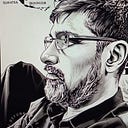Book Review: The Smile of Murugan
Travelogues are personal diaries. Will a reader understand this? I don’t know. But when it is put in front of a reader, we will have to consider the reader’s view as sacrosanct. This world of readers has true believers, fanatics, skeptics, cynics, and agnostics — and so, the reviews will be based on their take — the beholder’s eyes, in a sense.
The Smile of Murugan is the essence of the book — the benign, ethereal, boyish smile of the young son of Siva-Parvati reflects the deep spiritual nature of Tamils and their affable nature. The idea of a three-millennium-old classical civilization still surviving with its original strands amazes the open mind of Michael Wood, the author.
The book also is a story of friendship between Mala, a 45-year-old Saiva-Vellala woman who lives in Chidambaram, the town where the famous Lord Nataraja’s temple resides. Her blind husband Mani is lives in the house but mostly confined to the house. Their four daughters live in that small house and Mala’s father’s. The author spends enough time building his interaction with Mala and her daughters, and her antecedents and weaves them into the narrative. At some point, as they travel, he quotes them as becoming like ‘husband and wife’, when she cautions him against purchasing an expensive gift.
The story begins with the author’s visit to Chidambaram and he is enamored by the dainty little town, its mystic nature, and the darshan of Lord Nataraja, as he meets Mala for the first time. They visit one of Rajdurai Dikshidar, who is now in the fringe and a derostered member of the austere priests of Lord Chidambaram (because he is a widower). The predictions of the astrologer, Rajdurai, come true. He is married to Rebecca, has two daughters, and turns up again to pursue the spiritual journey that the astrologer had predicted.
The major portion of the book goes through the journey starting from ‘City of Cosmic Dance’ — Chidambaram, after which they board a video bus with colorful characters including a doe-eyed girl Meenakshi, and the warden Mr. Ramasamy. The bus is rickety and plays grainy videos of plumpy hero MGR, and Ragini Ganth, and takes them on a whirlwind journey across Rameswaram (the chaotic shore temple that Rama built for Lord Siva), Tiruchendur (the smile of Murugan that the author falls for), Cap Comerin ( the virgin Goddess and the rock of Vivekananda), Suchindram, Courtallam ( where the back-breaking falls wake a little bit of divinity in the agnostic author), Srivilliputhur ( the erotic-nymph Saint Andal, who gains acceptance in conservative-orthodoxy of Vaishnatives), Tiruparankundram ( where the author opens up on the Muslim rule and presence in India and writes about the Rock of Sikander and the Murugan temple) and finally Madurai (where he feels the power of green-stoned Goddess Meenakshi, the fish or star-eyed one, the experience of the living divine). They proceed to Palani ( where he experiences the boyish smile of Murugan again) and return to Chidambaram.
His travel to Suryanarkoil — the temple of Saturn, in Tirunallar, is interrupted by a cyclone bringing in the vicissitudes of life in the small town. After the floodwaters recede, Michael travels to Cauvery Delta, the triangle that is the holiest per square kilometer space anywhere in the world. With more than 274 Saivite thirthas and a sprinkling of Vaishnava presence, the journey of discovery ends with Michael realizing that the face of Shani is similar to the astrologers.
He juxtaposes Chidambaram — a sleepy little town where life goes around a large ancient temple versus the fast-developing city of Madras, also called Chennai. The smaller towns still hold the fort to the invasion of the trappings of modernity. He also douses the changes in the political and behavioral landscape of modern India. The shift from regimes from Brahminical Congress to the anti-temple, anti-Brahminical DMK, and to the personality cult of MGR and Jayalalitha, leaning on the unfathomable love for movies, where MGR and ‘Ragini Kanth’ dominate the film scene.
The book ends with a sort of epilogue that gives the most recent trysts of Michael and Mala’s family when he returns with his daughters.
My take:
As I mentioned at the beginning of this review, one has to understand that Michael is a journalist, but is a huge fan of the land of Tamils, their spirituality, and culture. The deep-rooted spiritualism has survived the ravages of time and invasions and stands alongside the influence of modern television and cinema.
The experience that Michael goes through is shared in three forms: The sensory form — sights, scents, and sounds, the spiritual form — the appeal to his higher senses giving him an ethereal experience, and the sublunary form — giving a comparative, worldly view of a journalist. It takes a discerning reader to keep them apart and then take a view of the book.
For me, the book brings together a lot of unknown facts — spiritual, behavioral, societal, anthropological, cultural, and geographical — of my native land, but my three-track filters put me on to understanding the author’s narrative vs opinions. A definite one-time read.
~Ashok Subramanian © 2023
